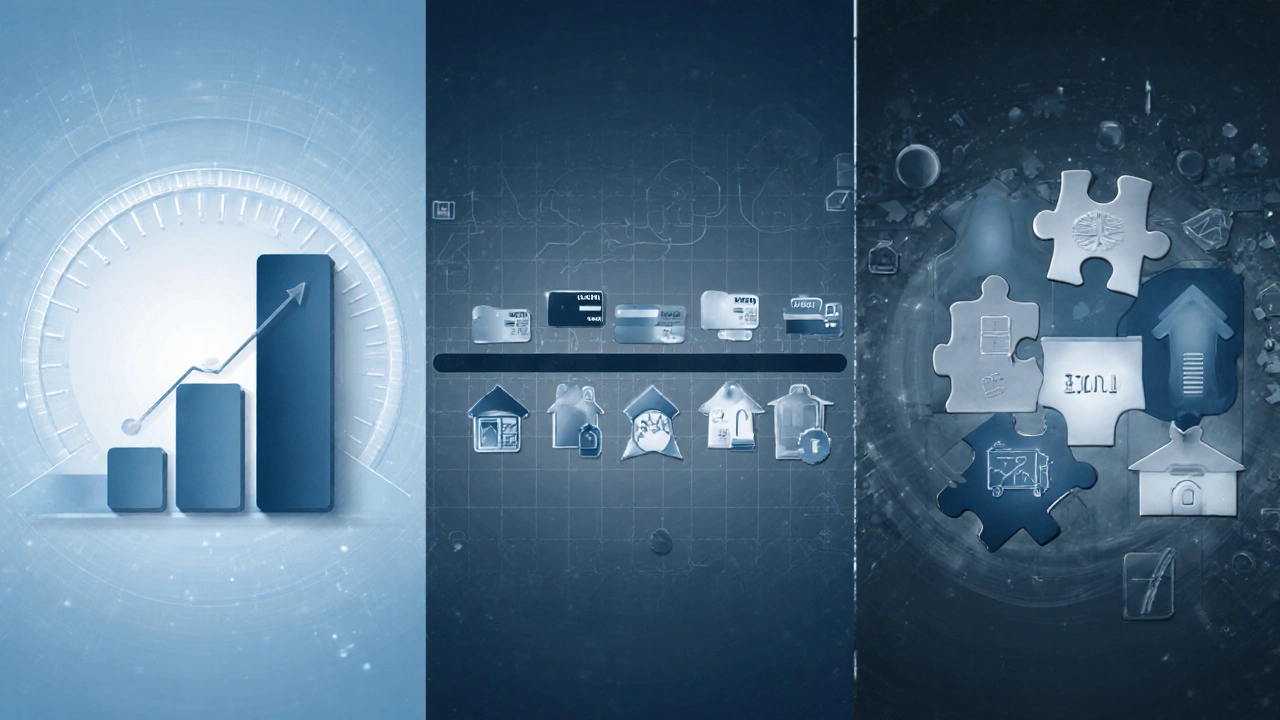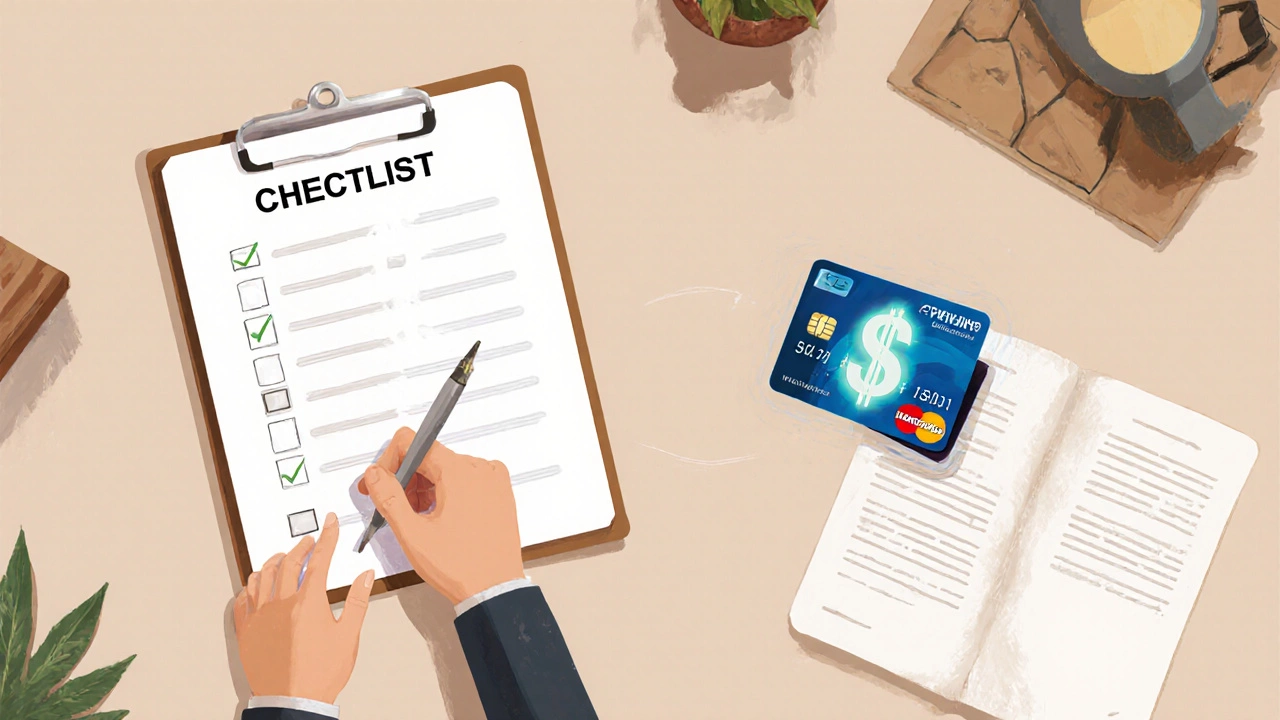Credit Card Closure Impact Calculator
This calculator estimates the potential impact on your credit score when closing a credit card based on:
- Credit Utilization: Ratio of balances to available credit
- Credit History Length: Age of the account being closed
- Overall Credit Profile: How much credit you're losing relative to your total
Results are estimates and may vary based on individual circumstances.
Quick Takeaways
- Closing a credit card can lower your score, but the effect depends on how you manage other factors.
- Credit utilization and the average age of accounts are the two biggest score drivers after a closure.
- Sometimes downgrading or transferring the balance is smarter than outright canceling.
- Take a few steps-pay down balances, keep older cards open, and notify your issuer-to protect your score.
- Monitor your credit report for at least three months after any change.
What "canceling a credit card" really means
When you cancel a credit card (also called closing an account), you are asking the issuer to permanently deactivate the revolving line of credit linked to that card number. The issuer will stop reporting new activity for that account, and eventually the record disappears from your credit file-usually after seven years if it’s a closed, zero‑balance account.
How a credit score is calculated
Understanding where a closed card fits in the score math helps you see the real impact.
Most major scoring models (FICO, VantageScore) break the calculation into five buckets:
- Payment History (35% of the score): whether you’ve paid on time.
- Credit Utilization (30%): the ratio of balances to total credit limits.
- Credit History Length (15%): how long your accounts have been open.
- Credit Mix (10%): variety of credit types (cards, loans, mortgages).
- New Credit (10%): recent hard inquiries and newly opened accounts.
Only the first three buckets are directly affected by closing a card.

What hurts your score the most?
Two components move the needle the most when you cancel:
| Factor | How it changes | Typical score impact |
|---|---|---|
| Credit Utilization | Available credit drops, balance stays the same. | 5-30 points, depending on the new ratio. |
| Credit History Length | Average age of accounts shrinks. | 2-10 points, more if the closed card was very old. |
| Credit Mix | Minor effect unless you lose the only revolving account. | 0-3 points. |
Payment history isn’t directly touched-unless you miss a payment during the transition.
When canceling is likely to cause a noticeable dip
- You’re closing one of only a few cards, so the loss of total credit is sizable.
- The card you’re closing carries the highest credit limit, and you keep balances on other cards.
- The account is old (10+ years) and you have a short overall credit history.
- You’ve recently applied for new credit, adding hard inquiries.
In those scenarios, a 20‑ to 40‑point drop in the first month isn’t unusual. The dip usually stabilizes after three to six months as the scoring model re‑weights the remaining data.
Safer ways to reduce or eliminate a card you don’t need
Instead of an abrupt closure, consider these alternatives:
- Downgrade to a no‑annual‑fee version. Issuers often let you keep the same account number and credit line while removing the fee. Utilization stays the same, and the age of the account is preserved.
- Transfer balances. Pay down or move debt to another card before you close. Lower utilization cushions the score hit.
- Keep a small recurring charge. Even a $1 subscription that you pay each month signals activity, preventing the account from becoming “inactive” in the eyes of some bureaus.
- Close only after you’ve built a buffer. Aim for a total utilization below 10% before canceling. That way the removal of credit line won’t push you over the 30% threshold most scoring models penalize.

Step‑by‑step guide to cancel a card with minimal damage
- Check your current credit utilization across all revolving accounts. Credit Bureau (Equifax, Experian, or TransUnion) provides the data.
- If utilization is above 30%, pay down balances or request limit increases on other cards.
- Identify the oldest card you plan to close. If it’s your only card with a high limit, consider downgrading instead.
- Make a final payment to bring the balance to zero. Confirm the issuer reports the zero balance before you close.
- Call the issuer’s customer service, request “account closure,” and ask for a written confirmation.
- Ask the rep whether the closure will generate a hard inquiry (it usually does not, but double‑check).
- Destroy the physical card and any linked virtual card numbers.
- Monitor your credit reports for the next three months. Look for the closed‑account status and any unexpected changes in utilization.
Common myths about closing cards
- Myth: Closing a card always drops your score by dozens. Reality: The magnitude depends on utilization and age. A well‑managed, low‑utilization profile may see only a 5‑point dip.
- Myth: The act of closing creates a hard inquiry. Reality: Most issuers treat closure as a “soft” event. Hard inquiries only happen when you apply for new credit.
- Myth: All closed accounts disappear after a year. Reality: Closed, zero‑balance accounts stay on your report for up to seven years, still contributing to your average age.
What to do if your score takes a hit
Don’t panic. A temporary dip is normal.
- Keep utilization low (under 10% is ideal).
- Make all payments on time-payment history is the most powerful factor.
- Consider adding a small, low‑interest credit‑builder loan if you need to boost mix.
- Re‑check your credit report for errors. A mistaken “late payment” can amplify the drop.
- Give it 30-60 days; most scoring models re‑calculate and the score often rebounds.
Frequently Asked Questions
Will canceling a credit card affect my ability to get a loan?
Lenders look at the same score factors-payment history, utilization, and age. If you close a card and your utilization rises above 30%, a lender may see you as riskier. Keeping utilization low after the closure mitigates the effect.
Does a closed account still count toward my credit mix?
Yes, a closed revolving account remains part of your mix for as long as it appears on your report. It only stops counting once the record drops off after seven years.
Can I reopen a card I’ve canceled?
Sometimes. If the issuer still has your account on file, they may allow you to reactivate it, but the credit limit might be reduced. It will still be reported as a reopened account, which could reset the age component.
Is it better to close a card with a high annual fee or keep it?
If the card adds significant credit limit and you can keep utilization low, keeping it may be worth more than the fee. Otherwise, downgrade to a no‑fee version or close it after you’ve paid down other balances.
Will closing a card generate a hard inquiry on my report?
No. Closing an existing account is a soft event. Hard inquiries only happen when you apply for new credit.

